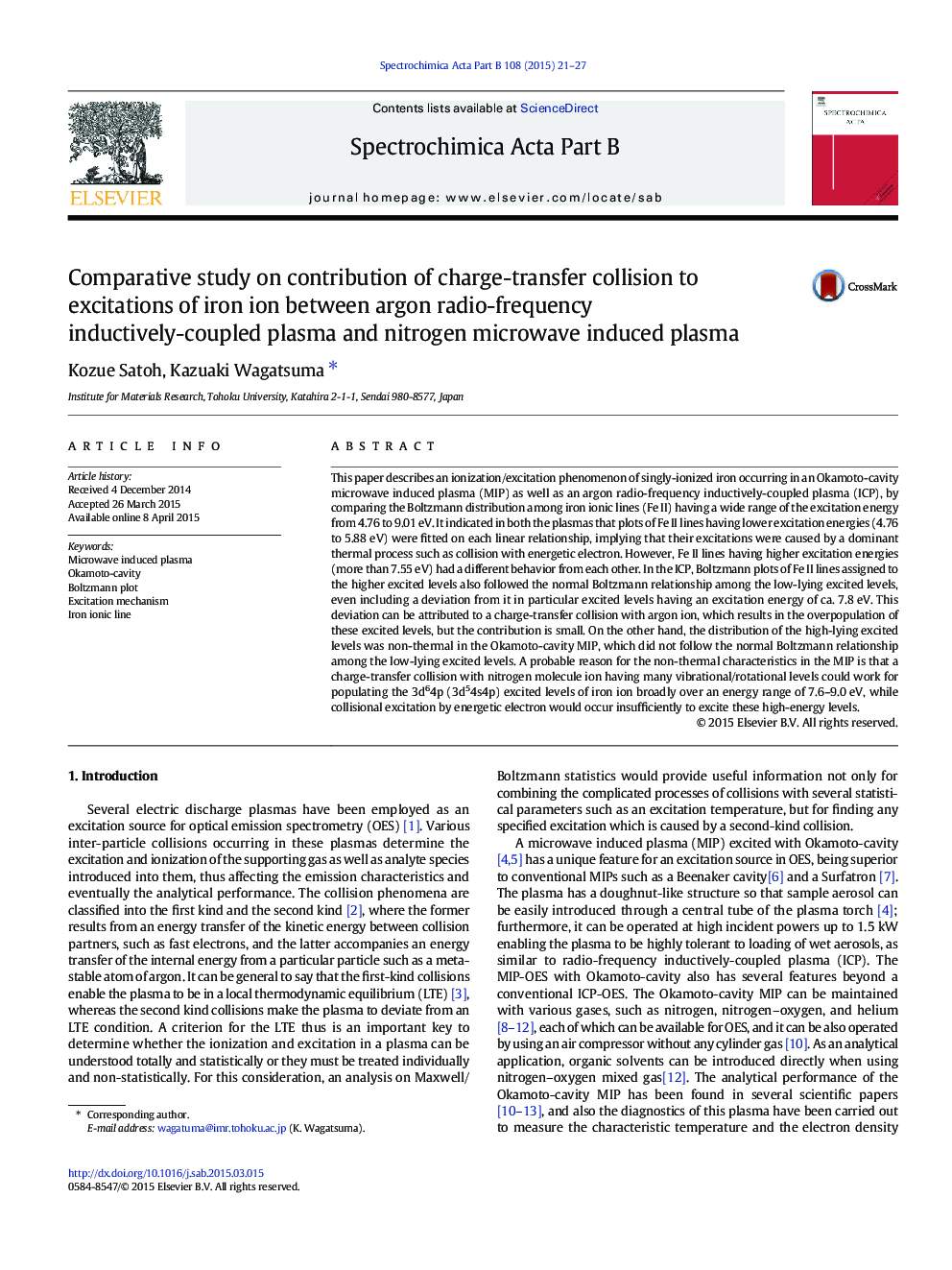| Article ID | Journal | Published Year | Pages | File Type |
|---|---|---|---|---|
| 1239583 | Spectrochimica Acta Part B: Atomic Spectroscopy | 2015 | 7 Pages |
•This paper describes the excitation mechanism of iron ion in Okamoto-cavity MIP in comparison with conventional ICP.•Boltzmann distribution is studied among iron ionic lines of various excitation levels.•We find a non-thermal behavior of the high-lying energy levels in MIP which deviates from the normal distribution.•This non-thermal behavior would be caused by charge-transfer collisions with the ground state of nitrogen molecule ion.
This paper describes an ionization/excitation phenomenon of singly-ionized iron occurring in an Okamoto-cavity microwave induced plasma (MIP) as well as an argon radio-frequency inductively-coupled plasma (ICP), by comparing the Boltzmann distribution among iron ionic lines (Fe II) having a wide range of the excitation energy from 4.76 to 9.01 eV. It indicated in both the plasmas that plots of Fe II lines having lower excitation energies (4.76 to 5.88 eV) were fitted on each linear relationship, implying that their excitations were caused by a dominant thermal process such as collision with energetic electron. However, Fe II lines having higher excitation energies (more than 7.55 eV) had a different behavior from each other. In the ICP, Boltzmann plots of Fe II lines assigned to the higher excited levels also followed the normal Boltzmann relationship among the low-lying excited levels, even including a deviation from it in particular excited levels having an excitation energy of ca. 7.8 eV. This deviation can be attributed to a charge-transfer collision with argon ion, which results in the overpopulation of these excited levels, but the contribution is small. On the other hand, the distribution of the high-lying excited levels was non-thermal in the Okamoto-cavity MIP, which did not follow the normal Boltzmann relationship among the low-lying excited levels. A probable reason for the non-thermal characteristics in the MIP is that a charge-transfer collision with nitrogen molecule ion having many vibrational/rotational levels could work for populating the 3d64p (3d54s4p) excited levels of iron ion broadly over an energy range of 7.6–9.0 eV, while collisional excitation by energetic electron would occur insufficiently to excite these high-energy levels.
